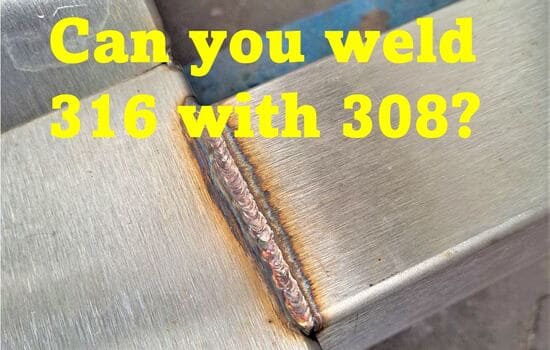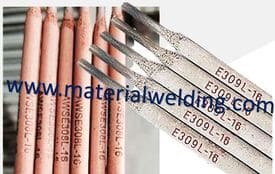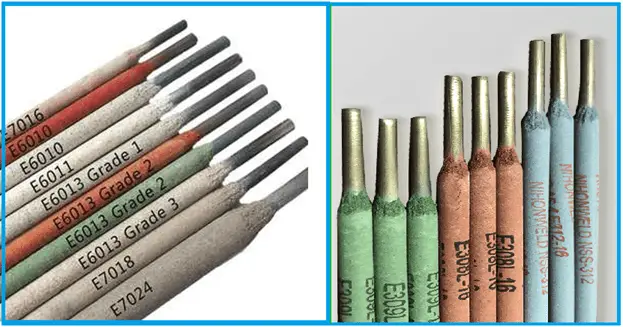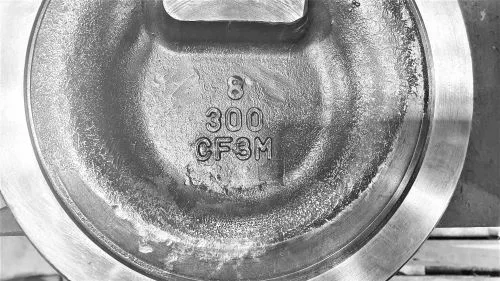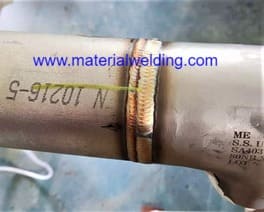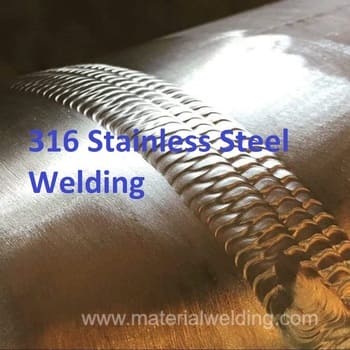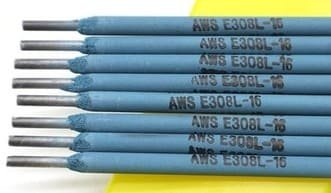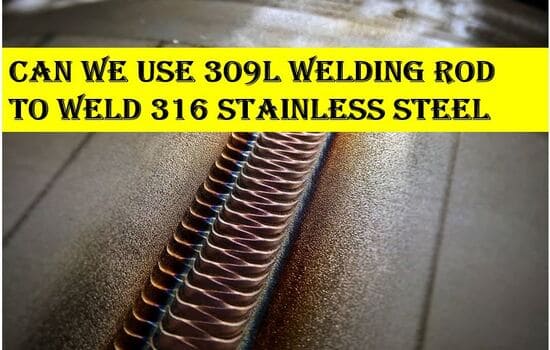E316L-15/16/17 is a low carbon stainless steel welding fast freezing electrode that is known for its excellent corrosion resistance and high resistance to intergranular carbide corrosion without addition of Niobium or Titanium elements.
E316L-15/16/17 welding electrodes are mainly used for welding low carbon molybdenum alloyed stainless steel alloys such as AISI 316L, X5CrNiMo17-12-2, CF3M and CF8M casting materials.
In this post, we will take a look at the specifications, chemical composition, mechanical properties, and applications of E316L welding electrode, as well as the recommended welding parameters for this electrode.
E316L-15/16/17 rod specification
E316L-15/16/17 welding electrode specification is AWS A5.4. The E316L-15/16/17 classification for welding electrodes is specified in the AWS A5.4 standard set by the American Welding Society (AWS).
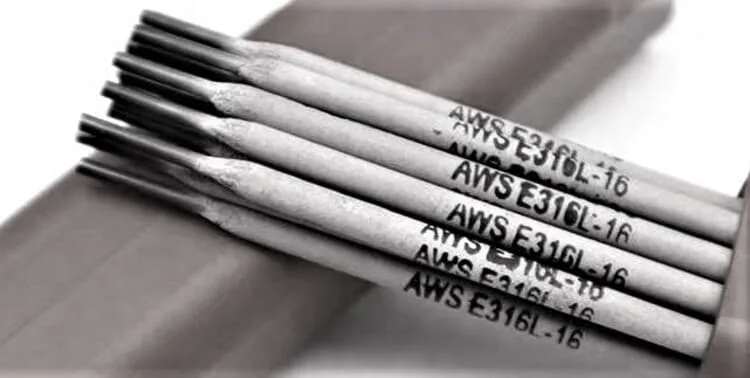
The AWS A5.4 standard is for the classification of stainless steel electrodes and filler wires for shielded metal arc welding.
The E316L-15, E316L-16 and E316L-17 classifications fall under the E316L type of welding electrode. All of them have the same composition, but they are distinguished by their usability properties.
E316L-15/16/17 welding rod Chemical Compositions
The UNS Number of E316L welding electrode is W31613. The chemical composition of E316L-15/16/17 welding rod as per AWS A5.4 specification is as follows:
- C%: 0.04 max
- Mn %: 0.5- 2.0
- Si %: 1.00 max
- P %: 0.04 max
- S %: 0.03 max
- Mo %: 2.0-3.0
- Cr %: 17.0-20.0
- Ni %: 11.0-14.0
- Cu %: 0.75 max.
- Fe %: Balance
E316L Mechanical Properties
The mechanical properties of E316L welding electrode include a tensile strength of 70 ksi, a yield strength of 50 ksi (typical), and an elongation of 30%.
| Property | Value |
| Tensile strength | 70 Ksi (490 MPa) |
| Yield strength | Not specified |
| Elongation | 30% minimum |
| Impact toughness | Not specified |
E316L-15/16/17 Welding Rod Polarity
When using E316L-15/16/17 welding rod, it’s recommended to use the SMAW process with a DC & AC Polarity.
- E316L-15 can be used with DCEP polarity in all welding positions.
- E316L-16 can be used AC & DCEP polarity in all welding positions.
- E316L-17 can be used with AC & DCEP polarity in all welding positions.
- E316L-26 can be used with AC & DCEP polarity in Flat & horizontal positions only.
E316L Applications
E316L welding electrode is primarily used for welding low-carbon, molybdenum-bearing austenitic alloys. The low carbon content (0.04%) in the composition of the electrode provides excellent resistance to intergranular corrosion, making it suitable for applications where corrosion resistance is a primary concern.
The main application of E316L welding electrode is welding of types 316 and 316L stainless steel & CF3M, CF8M casting welding.
E316L welding electrode is also commonly used in the chemical, food and pharmaceutical industries, as well as in the marine and power generation industries. It is also used in the repair and maintenance of equipment that requires a high degree of corrosion resistance.
It’s worth mentioning that E316L electrodes are not as strong at elevated temperatures as Type E316H, this makes E316L more suitable for low temperature applications or where elevated temperature resistance is not required. And E316L is not recommended for welding of higher-carbon versions of Type 316 such as Types 316H, 316Cb, 316Mo, and 316Ti.
E316L welding parameters
When using E316L welding electrode, it’s crucial to use the correct welding parameters to guarantee a high-quality weld. Typically, E316L welding electrode is used with DC electrode negative polarity.
A current range of 80-110 Amps is usually recommended for welding with 3/32 inches rod, and 110-130 Amps for 1/8 inches rod. The recommended voltage range for this electrode is 20-26 Volts, and the recommended travel speed is approximately 6-15 inches per minute.
